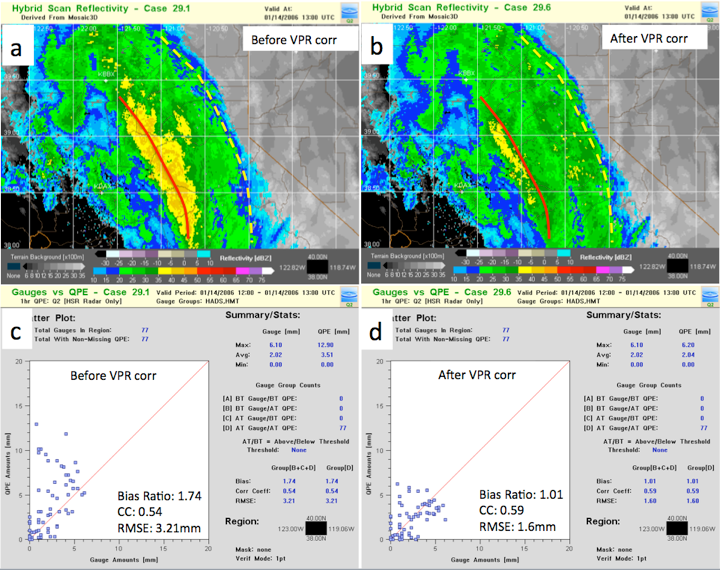HMT Publication Notice
January 25, 2013
A journal article entitled Radar-Based Quantitative Precipitation Estimation for the Cool Season in Complex Terrain: Case Studies from the NOAA Hydrometeorology Testbed by J. Zhang, Y. Qi, D. Kingsmill, and K. Howard was published in the December 2012 issue of the Journal of Hydrometeorology
The study explores error sources of the National Weather Service operational radar-based quantitative precipitation estimation (QPE) during the cool season over the complex terrain of the western U.S. A new, operationally-geared radar QPE was developed and tested using data from the NOAA Hydrometeorology Testbed (HMT) during the 2005-2006 cool season in northern California. The new radar QPE scheme includes multiple steps for removing nonprecipitation echoes, constructing a seamless hybrid scan reflectivity field, applying vertical profile of reflectivity (VPR) corrections to the reflectivity, and converting the reflectivity into precipitation rates using adaptive Z-R relationships.
Specific issues in radar rainfall accumulations were addressed, which include wind farm contamination, blockage artifacts, and discontinuities due to radar overshooting. The new radar QPE was tested over a six-month period of the 2005-2006 cool season and showed significant improvements over the current operational radar QPE (43% reduction in bias and 30% reduction in root mean square error) when compared with gauges. An example of improvement by employing a VPR correction is shown in Fig. 1.
The article notes that one of the largest remaining challenges is obtaining accurate radar QPE over the windward slopes of significant mountain ranges, where low-level orographic enhancement of precipitation is not resolved by the operational radars leading to underestimation. Additional high-resolution and near-surface radar observations are necessary for more accurate radar QPE over these regions.
Zhang, J., Y. Qi, D. Kingsmill, and K. Howard, 2012: Radar-Based Quantitative Precipitation Estimation for the Cool Season in Complex Terrain: Case Studies from the NOAA Hydrometeorology Testbed. J. Hydrometeor., 13, 1836–1854, doi:10.1175/JHM-D-11-0145.1
